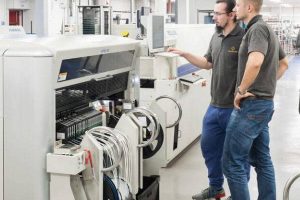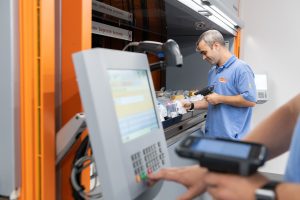
1. Can UK-based manufacturers afford not to outsource their requirements in the current downturn?
There is no doubt that offshore manufacturing has its place. For some original equipment manufacturers (OEMs), with the right type of product, significant savings in cost can be achieved. However, for many, blindly chasing apparently lower manufacturing prices can be a strategy fraught with danger.
For OEMs developing new technologies it can take many months (and sometimes years) to fully understand market needs and demand and to then create a stable, viable product that is ready for manufacture.
An early move to offshore manufacture could be disastrous. During product development, the periods of honing design and preparing for manufacture are critical times. It often needs careful, meticulous dialogue with specialists in these areas to ensure that products are fully optimised for production, test and reliability.
Many OEMs do not have electronics manufacturing skills or the resources needed to bring a product concept to market and they therefore seek third party help. Sourcing this level of support from offshore manufacturers can prove problematic. Different languages, cultures and time zones make it difficult to develop close, productive working relationships of the level required to ensure success.
2. Are their any particular products which are more suited to offshore manufacture than others?
Once in manufacture some products never change. They are manufactured over and over again, often for many years without changes being made to design, construction or components. Because of their ‘stable design’ and repeatability, this type of product may be well suited to offshore manufacture.
Conversely, some product designs are more fluid – they are changed regularly, often to meet the dynamic needs of end users. These changes may be new features or enhancements, changes to the external appearance, component rationalisation or reacting to component obsolescence.
Products such as these are not well suited to offshore manufacture. Implementing changes to product design requires close dialogue and co-operation between OEM and contract electronics manufacturers (CEM) to ensure they are implemented correctly.
Achieving this can be difficult when working with offshore manufacturers. The communication problems highlighted earlier come into effect and face-to-face meetings are infrequent because of the expense and time involved. There is also an increased risk that changes can be misinterpreted or misunderstood and, therefore, an increased risk that something will go wrong.
3. Should OEMs consider future supply patterns when considering offshore manufacturing?
Offshore manufacturers are geared up to deliver consistent, high volume production with extended shipping times and therefore cannot easily accommodate ‘lumpy’ demand. Supply chain inertia in responding to fluctuations in demand can lead to problems in end user supply and consequently erode customer satisfaction.
Companies that anticipate fluctuations in their supply patterns must look for supplier flexibility – CEMs that have low inertia and are able to respond quickly and efficiently to changes in demand.
OEMS that produce products which frequently change in design or that have lumpy demand are much better off building a relationship with a local CEM with which they can meet and discuss finer details as often as they need to.
4. What is the impact of culture on outsourcing manufacturing?
There are many OEMs using CEMs in the Far East and it is differences in culture that seem to be the most common reason for relationships breaking down.
Cultural differences are apparent in approaches to intellectual property (IP). Years of communist rule in China created a culture where individuals could not own ideas; they were handed over and subsequently became the property of the state. It became natural for people to share ideas and the concept of IP as a valuable asset was unknown.
There are numerous examples of problems with IP which have occurred as a result of Western companies having a poor understanding of exactly what they are buying when they enter into a relationship with a Chinese firm. It is easy to hand over increasing responsibility for design and development and production, only to find that you have helped to establish a new competitor.
Although the Chinese government has introduced legislation for the protection of IP, it may take much longer to change the culture than it did to change the law.
5. Are there any hidden costs involved in outsourcing offshore?
It is important that OEMs look at the total cost involved in offshore manufacturing – not just the unit price of the manufactured product. Many other costs need to be factored in. For example, the actual and lost opportunity costs associated with sending engineers to the Far East, which can be for several days in a different time zone, to discuss design changes or component obsolescence. The cost would be much lower if dealing with a locally-based company.
OEMs that successfully outsource abroad often end up employing someone who speaks the language of the country where products are being made in order to reduce risk and ensure that no detail is lost in translation. This can further add to costs, which again would not apply with a local supplier.
Offshore manufacturing has its place but requires considerable time and investment and it is important that the total costs of this are not ignored.
See also: Q5 – Interviews with electronics industry leaders
Read all the Electronics Weekly Q5 interviews. From ARM’s chairman, Sir Robin Saxby, to touchscreen technology firm Zytronic’s MD, Mark Cambridge, the business leaders share their particular insights on the UK electronics industry.
 Electronics Weekly
Electronics Weekly



